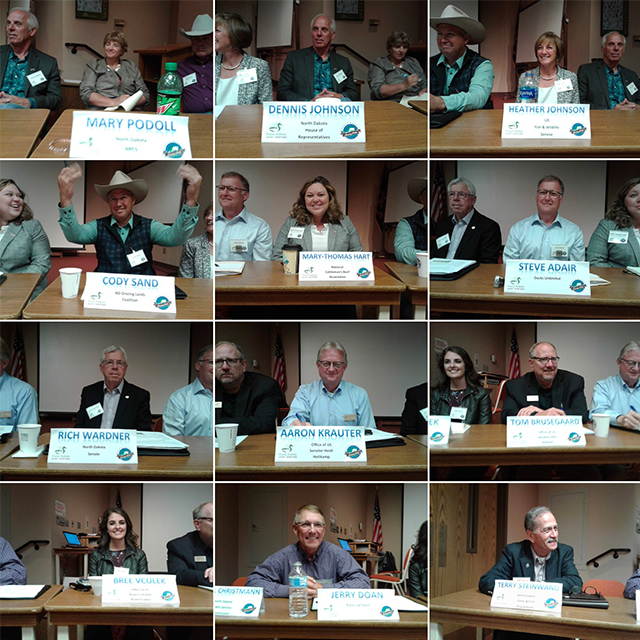A workshop and panel discussion, convened on August 29, 2018 as part of the ND Grasslands Policy Tour and Workshop, began with a summary of highlights of the tour by facilitator and rancher Josh Dukart of Seek First Ranch. Josh discussed lessons learned, such as:
- Let nature do the heavy lifting.
- Although agriculture may be part of the problem of soil degradation, it is also uniquely positioned to provide the solution.
- The importance of replacing inputs with management.
- Our real estate is three-dimensional (i.e., extends into the soil)
- Manage for what you WANT rather than against what you don’t want. In time, what is not desirable will wither away.
- It would be beneficial to change the conversation from “profitability versus conservation, to “profitability through conservation.”
Following Dukart, a panel convened to address several overarching topics, answer questions from the audience and to discuss opportunities for collaboration between agriculture, conservation, and political leaders. The 15 panelists included ND agency staff, agricultural producers, NGO personnel, legislators and legislative staff, and a North Dakota Public Service Commissioner (one of three who attended the tour).
While the comments were varied and far ranging, some common themes emerged such as the importance of outreach and education about soil health and the programs available to producers; the necessity of attracting younger people to agriculture and ranching; and the critical need to reach out to crop producers about putting land into winter crop cover to protect and increase soil health.
Many of the panelists addressed how the ways that relationships among seemingly disparate groups – farmers, ranchers, conservationists, and politicians – could be improved. Most frequently mentioned was the fact of the common desire of all to protect and improve North Dakota’s great natural resources, especially its soil and grasslands, although methods and perspectives might differ. Some legislators and agency personnel stressed their desire to learn what landowners wanted and needed to become better stewards of soil and grasslands.
Another theme was that of the importance of maintaining rural communities into the future while conserving soil, water and wildlife resources. Along these lines, educating youth and encouraging them to be farmers and ranchers was identified as a priority – the average age of a farmer in the US is 58 years, and in North Dakota, that average rises.
Jerry Doan, owner of Black Leg Ranch – one of the two ranches toured the previous day – and an articulate spokesman for ranching and conservation, reflected the feeling of commitment of the attendees and panelists, stating, “we are stronger as a group working for the benefit of North Dakota.”

